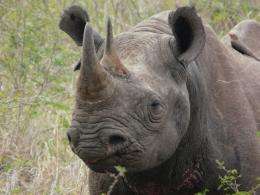Conservation targets too small to stop extinction: study

(PhysOrg.com) -- Conservation biologists are setting their minimum population size targets too low to prevent extinction, according to a new study led by University of Adelaide.
Conservation biologists are setting their minimum population size targets too low to prevent extinction.
That's according to a new study by University of Adelaide and Macquarie University scientists which has shown that populations of endangered species are unlikely to persist in the face of global climate change and habitat loss unless they number around 5000 mature individuals or more.
The findings have been published online today in a paper `Pragmatic population viability targets in a rapidly changing world' in the journal Biological Conservation.
"Conservation biologists routinely underestimate or ignore the number of animals or plants required to prevent extinction," says lead author Dr Lochran Traill, from the University of Adelaide's Environment Institute.
"Often, they aim to maintain tens or hundreds of individuals, when thousands are actually needed. Our review found that populations smaller than about 5000 had unacceptably high extinction rates. This suggests that many targets for conservation recovery are simply too small to do much good in the long run."
A long-standing idea in species restoration programs is the so-called '50/500' rule. This states that at least 50 adults are required to avoid the damaging effects of inbreeding, and 500 to avoid extinctions due to the inability to evolve to cope with environmental change.
"Our research suggests that the 50/500 rule is at least an order of magnitude too small to effectively stave off extinction," says Dr Traill. "This does not necessarily imply that populations smaller than 5000 are doomed. But it does highlight the challenge that small populations face in adapting to a rapidly changing world."
Team member Professor Richard Frankham, from Macquarie University's Department of Biological Sciences, says: "Genetic diversity within populations allows them to evolve to cope with environmental change, and genetic loss equates to fragility in the face of such changes."
Conservation biologists worldwide are battling to prevent a mass extinction event in the face of a growing human population and its associated impact on the planet.
"The conservation management bar needs to be a lot higher," says Dr Traill. "However, we shouldn't necessarily give up on critically endangered species numbering a few hundred of individuals in the wild. Acceptance that more needs to be done if we are to stop `managing for extinction' should force decision makers to be more explicit about what they are aiming for, and what they are willing to trade off, when allocating conservation funds."
More information: The paper is online at dx.doi.org/10.1016/j.biocon.2009.09.001
Provided by University of Adelaide (news : web)















